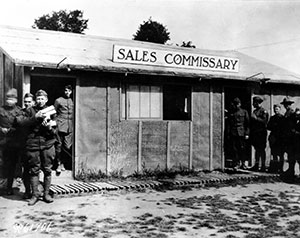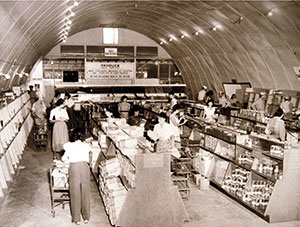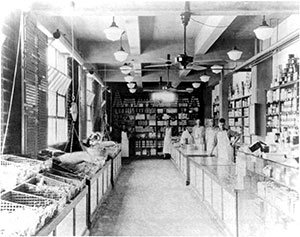This year, DeCA is celebrating the 157th anniversary of the modern commissary benefit, which officially began on July 1, 1867.
On that date, two years following the Civil War, enlisted men received the same shopping privilege that had been available to officers since 1825: the right to purchase goods, "at cost price," from their post's subsistence department warehouses.
But 1867 is regarded as the start of the "modern benefit" because men of all ranks became eligible to make such purchases, and these sales were not limited to frontier posts. Rather, they were permitted at every post, across the country as well as on the frontier, where the commanding officer believed they were necessary.
 It seems fitting that, following a war that helped do away with slavery and some of the old class distinctions, enlisted men, who were more in need of the commissary benefit because they received lower pay than their officers, were permitted to supplement their official rations at minimal cost.
It seems fitting that, following a war that helped do away with slavery and some of the old class distinctions, enlisted men, who were more in need of the commissary benefit because they received lower pay than their officers, were permitted to supplement their official rations at minimal cost.
As years passed, retirees, spouses and families also became eligible shoppers, and commissaries mirrored changes and progress in the civilian retail grocery industry – from self-service and supermarket-style shopping to product proliferation. As the nation sent its armed forces overseas, commissaries followed: Cuba, the Philippines, China and Panama all had U.S. military commissaries before 1905. Surcharges came and went. During the World Wars, commissaries spread all over the globe, from Europe and the Middle East to the Far East and even South America.

The Navy and Marine Corps opened their first commissaries in 1909-1910, and when the Air Force came into being in 1947, it inherited commissaries at Army Air Force bases and airfields.
In the early 20th century, each store ran things its own way – or, rather, as the local commander desired. If the commander was interested and enthused about the commissary, the facilities were good and well-run, with large stock lists; if he was not, then the commissary – and its patrons – suffered the consequences.
World War II sent Americans in uniform all over the world, and commissaries followed. After war's end, starting with the Armed Services Commissary Store Regulation of 1949, the services began taking control of the commissaries on their bases, professionalized store staffs, and created career paths for military and civilian employees.

By the 1980s, the four major services each had their own commissary system: AFCOMS (the Air Force Commissary Service), NAVRESSO (Navy Resale and Services Support Office), TSA (the Army's Troop Support Agency) and the Marine Corps Commissary Section. Under their direction, commissary staffs were further professionalized, many practices and procedures were standardized, and the stores themselves were upgraded.
By 1991, with the end of the Cold War in sight, funding for the military was beginning to be a political issue. Anticipating possible efforts to cut the commissary benefit, Congress approved merging the commissary systems of the four major services into one agency, the Defense Commissary Agency (DeCA), which officially took over the operation of 411 separate commissary locations around the world on Oct. 1, 1991. For the next 25 years, DeCA improved service, modernized its stores and increased customer savings.

Base Realignment and Closure (BRAC) actions and the downsizing of the American military have reduced the number of DeCA commissaries to 235, but all are either new or have been remodeled and modernized.
The commissary remains a key factor in both recruitment and retention, a focal point for quality of life on military installations, and along with medical care, is one of the two most valued items in the military benefit package. The commissary customers of 1867 would no doubt be amazed by the transformation that has taken place in the last century-and-a-half; but they would be pleased to know the benefit not only still exists, but is thriving.
